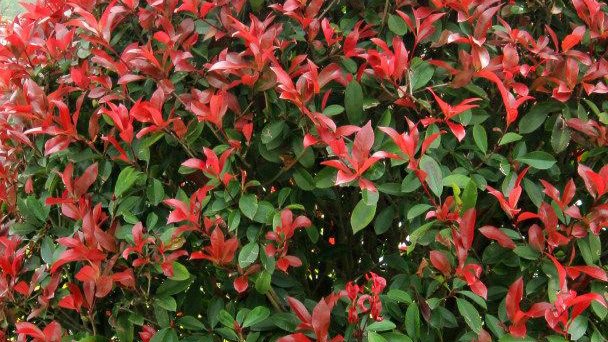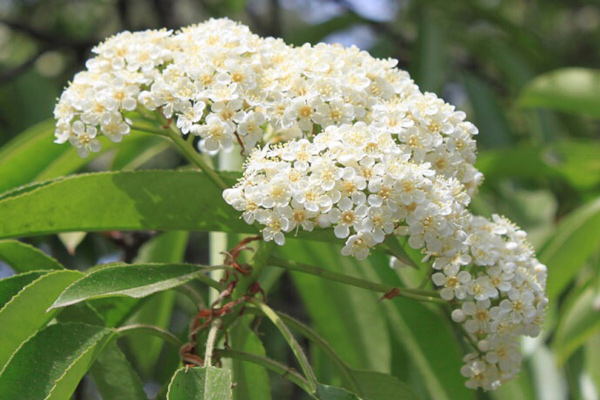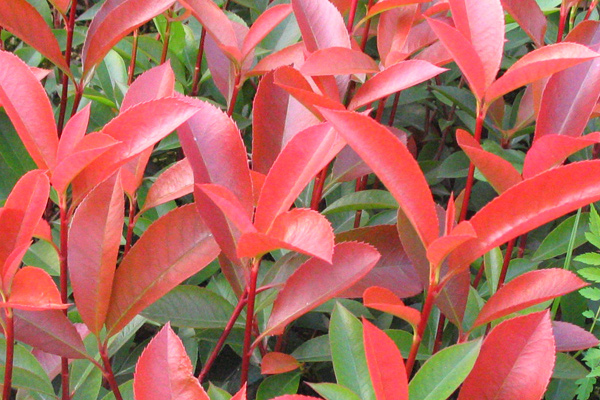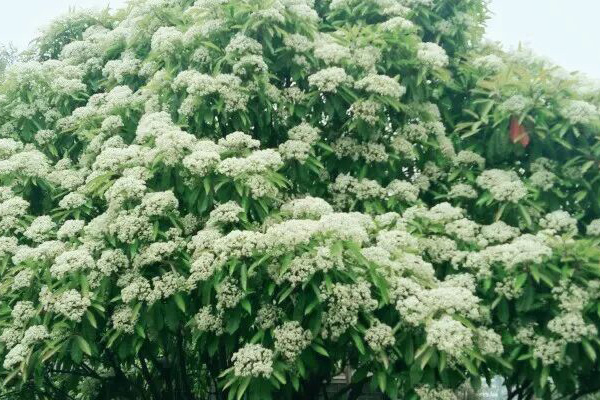Photinia Plant: Grow & Care for Photinia Tree
Written by Iris
Jan 30 2023

Photinia likes a warm and humid climate, and Photinia is not strong against the cold. Photinia has low requirements on the soil. Fertile and moist sandy soil is the most suitable. The flower language of heather is lonely, solemn, and majestic.
Continue in these steps:
When it comes to feeding, photinia will appreciate an application of 12-month controlled-release fertilizer at the start of spring. This will keep plants healthy and growing strongly. Compost or well-weathered animal manures may also be applied as a mulch over the roots to provide a little extra nourishment.
Insect pests that may bother your photinia include several species of mites, the European fruit-tip moth, and scale insects. They may be controlled by encouraging or releasing beneficial insects, such as ladybugs and lacewings, or by using neem oil.
Most animals will not bother a photinia, although birds enjoy eating the plant's small red berries.
The Chinese photinia, P. serratifolia grows much larger, achieving impressive heights of up to 30 ft (9 m). This is a hardier species but may still suffer from fireblight and mildew in humid conditions without enough sun.
Several varieties are available, including P. x fraseri 'Pink Marble' which has interesting green and white or green and pink variegated foliage. ‘Red Robin’ is the most popular variety and has bright red stems and coppery foliage.
Photinia Care Quick InfoHow to Grow Photinia TreePhotinia Propagation with Stem CuttingsPhotinia Propagation with LayersHow to Care for Photinia TreePhotinia Lighting RequirementsPhotinia Soil CarePhotinia WateringPhotinia Temperature & Humidity CarePhotinia Fertilizer CarePhotinia PruningPhotinia Pests & DiseasesPhotinia VarietiesPhotinia Tree Care FAQIs Photinia A Good Pollinator?Is Photinia Poisonous?What's The Best Way To Handle Fungal Outbreaks On My Photinia?
Photinia Care Quick Info
| Botanical/Scientific Name | Photinia |
| Common Name | Chinese Photinia, Chinese Hawthorn |
| When to Grow/Bloom/Harvest | Be best planted in fall/Bloom in late spring/early summer |
| Uses | Tall hedging here in the south |
| Origin | China and Japan |
| Light Care | Tolerate partial shade |
| Soil Care | Well-drained soil |
| Temperature Care | Are hardy down to 5°F (-15°C) |
| Humidity Care | The warm and humid climate |
| Watering | Water regularly during the first year |
| Pruning Care | Prune Photinia at least annually to thin the growth |
| Fertilizer Care | Slow-release fertilizer |
| Propagation | Cuttings |
| Toxic | Not toxic to humans |
| Flower Color | White flowers |
How to Grow Photinia Tree
Photinia Propagation with Stem Cuttings
While there are several ways you can propagate photinia from cuttings, it is easiest to do this by taking semi-hardwood cuttings in midsummer, ideally from stems that have just started to mature.- You should take a six- to eight-inch cutting from an area of new growth, generally at a point where the stem has just started to harden and mature. Remove the leaves from the lower half of the cutting.
- Fill a pot with a mixture of vermiculite and perlite, and water thoroughly. A container that's around six inches in diameter is perfect for planting one or two cuttings.
- Before planting, dip the cut end into rooting hormone powder, and tap it to remove any excess before you place the cutting at a depth of approximately two to four inches.
- If you plant multiple cuttings, make sure they do not touch.
- Let it root indoors or in a protected location that receives indirect sunlight. Keep the porous medium moist at all times, to help the roots develop.
- It can take as little as a month or as long as 20 weeks to produce new growth. Once this new growth appears, you can check whether your cuttings have rooted by gently tugging on the stem.
- If you feel resistance, your new plant is ready to be transplanted, as described below.
Photinia Propagation with Layers
If you keep the premium variety, Red Robin, like a shrub in your garden, the layer method is ideal for uncomplicated reproduction. In this case, you share the care of the offspring with the mother plant. Suitable candidates are one to two-year-old shoots in the outer shrub area. Draw these to the ground, mark the point of contact and draw a furrow in the ground using a spade.Continue in these steps:
- Remove the leaves from the middle part of the layer and dig it in the furrow a few centimeters deep
- Use stones or staples to fix the layer in the ground so the branch will not bounce up
- Tie the shoot tip to a wooden stick
- Photinia Fraseri 'Red Robin' in the garden patch
- While the mother plant continues to supply the layer with nutrients, keep the soil slightly moist. During winter, cover the bed with a layer of foliage or brushwood. By the next spring, the shoot will have grown its own root system. If you feel a strong resistance when slightly pulling, the layer can be separated from the mother plant. Either feed the young photinia up in a pot until autumn with a nutrient-rich substrate or plant your pupil instantly at a sunny, warm place.

How to Care for Photinia Tree
Photinia Lighting Requirements
Photinia has a broad tolerance for sunlight exposure. It can even tolerate full shade, though this will limit flowering. In hot climates, this shrub does best when it gets partial shade—especially protection from the hot afternoon sun. It is best planted in north- or east-facing locations. In cooler climates, it prefers full sun.Photinia Soil Care
Equipped with a flat root system, Red Robin is dependent on soil with these characteristics for vital growth.- Deep and well-drained
- Fresh to moderately dry
- Nutrient-rich and humus-free
Photinia Watering
Once photinia is established, it needs very little attention. Only water when absolutely necessary, during very hot, dry spells or prolonged periods of drought. Photinia has strong roots that grow down deep in search of moisture.When it comes to feeding, photinia will appreciate an application of 12-month controlled-release fertilizer at the start of spring. This will keep plants healthy and growing strongly. Compost or well-weathered animal manures may also be applied as a mulch over the roots to provide a little extra nourishment.
Photinia Temperature & Humidity Care
Photinia does well in the climate conditions across USDA growing zones 7 to 9, provided it gets good airflow to prevent fungal disease. It does not do well in very wet, humid environments. It can survive in zone 6 when planted in a location that is sheltered from harsh winds yet has generally good air circulation around the shrub.Photinia Fertilizer Care
In many soils, especially those rich in nutrients, red-tip photinia requires little additional fertilizer. If you notice slow growth, apply a slow-release complete fertilizer in spring. In very alkaline or very acidic soils, the leaves may be yellow, indicating nutrient deficiencies. Alkaline soils may cause iron deficiency, the main symptom of which is yellowing around the veins of the leaves. Apply iron chelate to the leaves and the soil to help solve this problem. If the leaves show yellowing around the edges, the shrub may be exhibiting signs of magnesium deficiency due to acidic soil. Apply magnesium sulfate to help resolve this problem.Photinia Pruning
Photinia has a nice spherical shape but you may want to do some light pruning to form your bushes into a hedge. Late winter is the best time for this. Check regularly for broken or diseased branches and remove them when you find them. Light pruning will also encourage new red-leafed growth.Photinia Pests & Diseases
Photinia is prone to fungal diseases, which can spread quickly in a hedge if one plant succumbs to them. Careful watering that avoids wetting the leaves can help minimize the risk. Photinia may also suffer from fire blight, leaf spot, or powdery mildew.Insect pests that may bother your photinia include several species of mites, the European fruit-tip moth, and scale insects. They may be controlled by encouraging or releasing beneficial insects, such as ladybugs and lacewings, or by using neem oil.
Most animals will not bother a photinia, although birds enjoy eating the plant's small red berries.

Photinia Varieties
P. glabra or the Japanese photinia is a smaller species, reaching a maximum of around 12 ft in height and is suitable for the garden, but may suffer from mildew and leaf spot under certain conditions.The Chinese photinia, P. serratifolia grows much larger, achieving impressive heights of up to 30 ft (9 m). This is a hardier species but may still suffer from fireblight and mildew in humid conditions without enough sun.
Several varieties are available, including P. x fraseri 'Pink Marble' which has interesting green and white or green and pink variegated foliage. ‘Red Robin’ is the most popular variety and has bright red stems and coppery foliage.

Photinia Tree Care FAQ
Is Photinia A Good Pollinator?
Yes, it is a good pollinator. Those evil-smelling flowers attract bees, birds, and other pollinators making the plant a good companion for fruit trees and other ornamental plants where pollination is desired.Is Photinia Poisonous?
Photinia's berries should not be eaten by humans or household pets, although they are harmless to birds. They should also never be planted where livestock, such as cattle, graze as the leaves and berries are toxic to them.What's The Best Way To Handle Fungal Outbreaks On My Photinia?
Your photinia is susceptible to fungal diseases such as leaf spots and powdery mildew during wet weather. Allow space between your photinia plants and don’t plant them too close to buildings or other structures. Once infected, prune out diseased branches, to prevent spreading. Spray with a fungicide regularly, if you live in a rainy area.Latest Updated
- Diseases Red Tip Photinia - Causes & How to Save
- Photinia Plant: Grow & Care for Photinia Tree
- How Long Does Your Wood Fence Last - How to Maintain
- Can Vinyl Fence Be Painted - How to Paint it Simply
- How Much Does an Electric Pet Fence Cost - Is It Worth It?
- Woven vs Nonwoven Geotextile Fabric - Differences & How to Choose
- How to Grow & Care for Lilac Vine (Hardenbergia Violacea)
- When And How To Prune A Lilac Bush Like a Pro
- Benefits of Bugleweed - 7 Science-backed Health Benefits
- Bugleweed Dangers & Side Effects - Is It Poisonous?
Popular Articles
- Winter maintenance of Antirrhinum Majus
- How to Grow Terminalia Mantaly Tree
- How to Grow and Care for Crossostephium Chinense
- How to grow Antirrhinum Majus in spring
- Peristeria Elata (Dove Orchid) Profile: Info & Care Guide
- Underwatered Snake Plant (Sansevieria Trifasciata) - Signs And How To Fix
- How to Care for Brazilian Jasmine Plant (Mandevilla Sanderi)
- How to Grow & Care for Graptopetalum Purple Delight in Summer
- Rosa Chinensis (China Rose): Plant Growing & Care Tips
- How to Care for Baby Sun Rose (Aptenia Cordifolia)